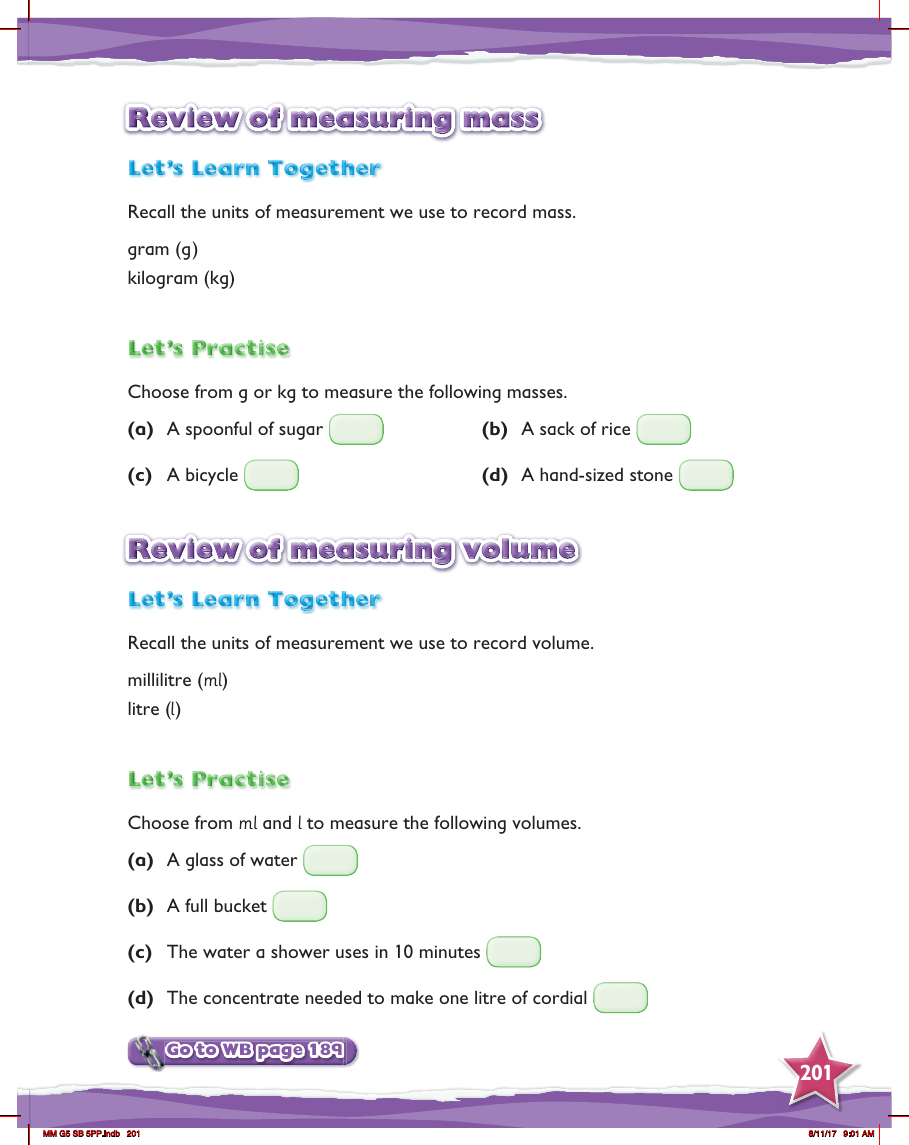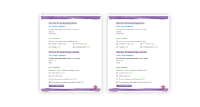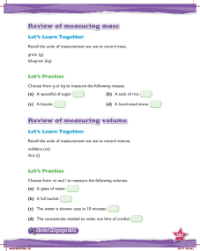Max Maths, Year 5, Practice, Review of measuring mass

Maths Resource Description
In a Year 5 mathematics practice session, students review the concept of measuring mass. They are reminded of the two primary units of measurement for mass, which are grams (g) and kilograms (kg). Grams are used to measure lighter objects, while kilograms are appropriate for heavier items. The lesson includes a practical exercise where students must decide which unit of measurement is suitable for a variety of objects. They are presented with items such as a spoonful of sugar, a sack of rice, a bicycle, and a hand-sized stone, and they need to choose whether to measure these items in grams or kilograms.
Following the mass measurement review, the session moves on to a review of measuring volume. Students are prompted to recall the units of measurement for volume, which are millilitres (ml) and litres (l). Millilitres are typically used for small quantities of liquid, while litres are used for larger volumes. The practice activity requires students to select the correct unit of measurement for different scenarios, including the volume of a glass of water, the capacity of a full bucket, the amount of water used by a shower in 10 minutes, and the concentrate required to make one litre of cordial. The exercises aim to reinforce their understanding of volume measurement and prepare them for further related tasks on workbook page 189.

